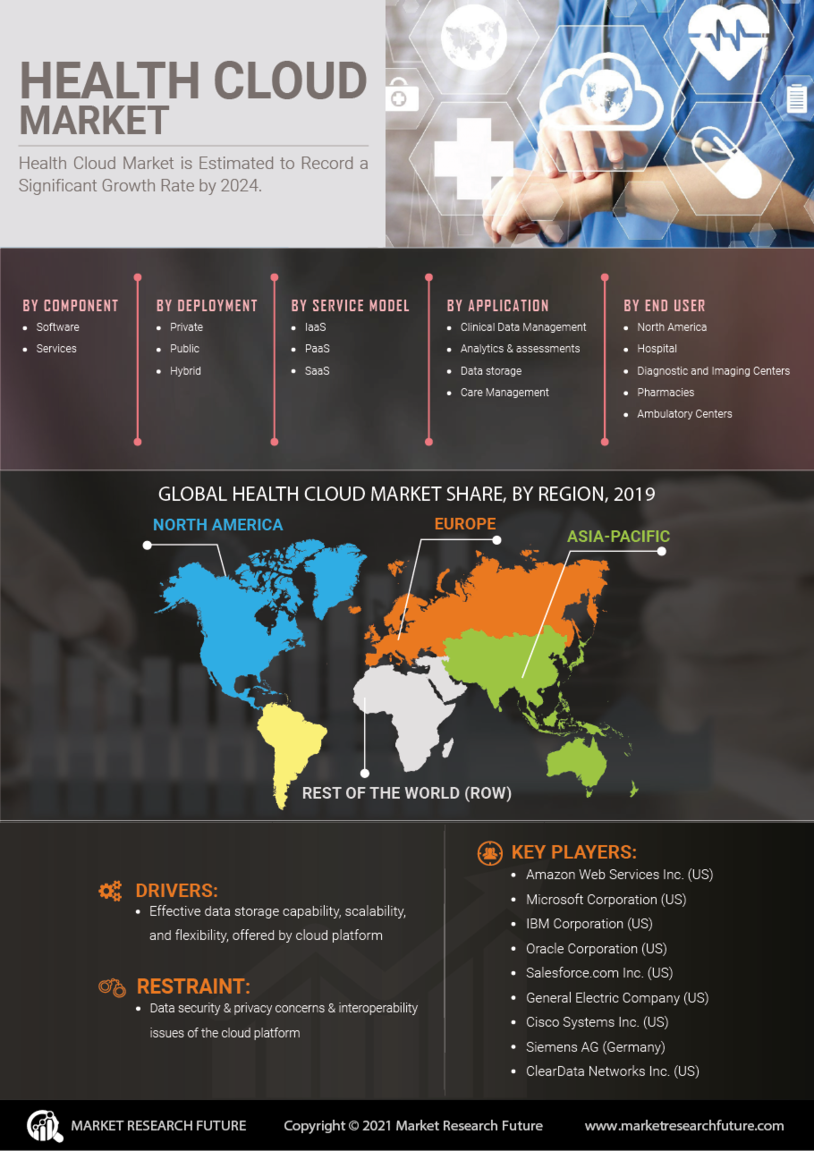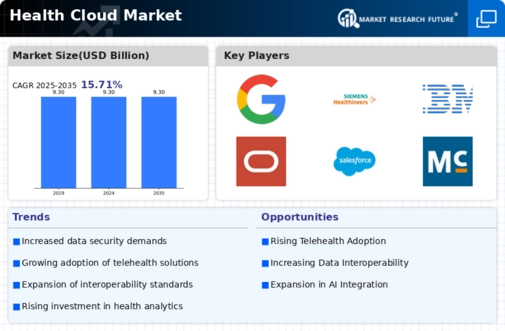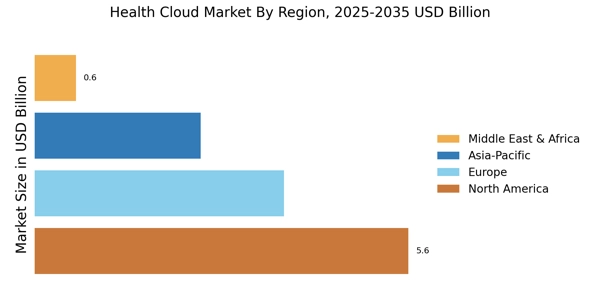Growing Emphasis on Patient-Centric Care
The Health Cloud Market is increasingly aligning with the shift towards patient-centric care models. This paradigm emphasizes the importance of involving patients in their own healthcare decisions, fostering a collaborative relationship between providers and patients. As healthcare systems evolve, there is a growing recognition that patient engagement can lead to improved health outcomes. Data suggests that organizations implementing patient-centric strategies experience a 20% increase in patient satisfaction scores. Health cloud solutions play a vital role in this transformation by providing patients with access to their health information and personalized care plans. The focus on patient-centric care is likely to propel the adoption of health cloud technologies, as stakeholders seek to enhance the overall patient experience.
Advancements in Interoperability Standards
Interoperability remains a critical focus within the Health Cloud Market, as healthcare organizations seek to enhance data exchange capabilities. The establishment of robust interoperability standards is essential for seamless communication between disparate health information systems. Recent initiatives have aimed to standardize data formats and protocols, thereby facilitating the integration of various health applications. This advancement is particularly significant given that approximately 70% of healthcare providers report challenges in sharing patient data. Enhanced interoperability not only improves care coordination but also supports the development of comprehensive health records. Consequently, the push for interoperability is likely to drive growth within the Health Cloud Market, as stakeholders recognize the value of interconnected systems.
Rising Demand for Remote Patient Monitoring
The Health Cloud Market is experiencing a notable surge in demand for remote patient monitoring solutions. This trend is largely driven by the increasing prevalence of chronic diseases, which necessitate continuous health management. According to recent data, approximately 60% of adults have at least one chronic condition, leading to a heightened need for effective monitoring tools. Health cloud solutions facilitate real-time data collection and analysis, enabling healthcare providers to offer timely interventions. Furthermore, the convenience of remote monitoring enhances patient engagement and adherence to treatment plans. As healthcare systems strive to improve outcomes while reducing costs, the integration of remote monitoring within the Health Cloud Market appears to be a pivotal strategy.
Regulatory Support for Health Cloud Solutions
Regulatory frameworks are increasingly supportive of the Health Cloud Market, as governments recognize the potential of cloud-based solutions to enhance healthcare delivery. Recent policy initiatives have aimed to promote the adoption of digital health technologies, including health cloud services. For instance, certain regulations now incentivize healthcare providers to transition to cloud-based systems, thereby improving data accessibility and security. This regulatory support is crucial, as it addresses concerns related to data privacy and compliance. As a result, healthcare organizations are more inclined to invest in health cloud solutions, knowing that they align with regulatory expectations. The favorable regulatory landscape is likely to stimulate growth within the Health Cloud Market, encouraging innovation and adoption.
Increased Investment in Health Technology Startups
The Health Cloud Market is witnessing a surge in investment directed towards health technology startups. Venture capital funding has significantly increased, with investors recognizing the potential of innovative health cloud solutions to transform healthcare delivery. In recent years, funding for health tech startups has reached unprecedented levels, with estimates suggesting a 30% increase in investment year-over-year. This influx of capital enables startups to develop cutting-edge technologies that enhance patient care and streamline operations. As these startups introduce novel solutions into the market, the competitive landscape within the Health Cloud Market is likely to evolve, fostering innovation and driving further investment.


















Leave a Comment